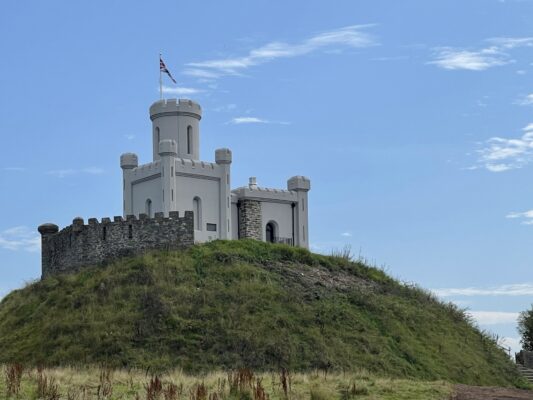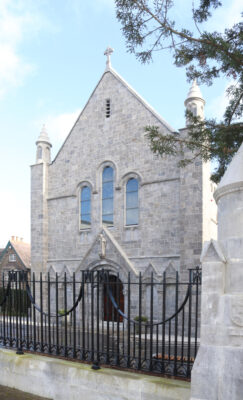Malcolm Noonan, TD, Minister of State for Heritage launches the IGS & NIAH Vernacular Architecture Study Day.
28.06.2023
Posted by IGS

On Tuesday 27th June, IGS Executive Director, Donough Cahill welcomed Malcolm Noonan, TD, Minister of State for Heritage to the City Assembly House, where Minister Noonan delivered the opening address at the Irish Georgian Society and National Inventory of Architectural Heritage, Department of Housing, Local Government and Heritage’s Appreciating and Minding our Vernacular Architecture study day.
The study day formed an action of the Irish Georgian Society’s Conservation Education Programme which is supported by the Department of Housing, Local Government and Heritage and overseen by the IGS’s Assistant Director & Conservation Manager, Emmeline Henderson.
The study day was co-convened by the National Inventory of Architectural Heritage Architectural Conservation Advisors Dr Barry O’Reilly and Sarah Jane Halpin.
The full capacity in person audience and the many who joined online comprised both owners and occupiers of vernacular buildings, as well as heritage professionals and practitioners responsible for their maintenance and care: with formal Continuing Professional Development received from the Construction Industry Federation, Engineers Ireland, the Register of Heritage Contractors and the Royal Institute of the Architects of Ireland.
The Society would like to extend our sincere gratitude to the speakers: Tony Donoghue, independent film maker & furniture conservator; Sarah Jane Halpin, NIAH, Department of Housing, Local Government and Heritage; Dr Moses Jenkins, Historic Environment Scotland; Dr Fidelma Mullane, vernacular consultant; Rachel McKenna, Architectural Conservation Officer, Offaly County Council; Duncan McLaren, Dedalus Architects; Richard McLoughlin, Lotts Architecture & Urbanism; Anna Meenan, The Heritage Council; Dr Bairbre Ní Fhloinn, School of Irish, Celtic Studies and Folklore, UCD; Tom Pollard, conservation stonemason; and Dr Barry O’Reilly (keynote speaker), NIAH, Department of Housing, Local Government and Heritage for their considerable generosity in sharing their passion and expert knowledge of the many facets of Ireland’s vernacular architecture.
The study day was also greatly enhanced by the Chairs (Helena Bergin, Architectural Conservation Officer, Fingal Co. Council; Dr Joe Gallagher, Heritage Officer, Donegal Co. Council; & Rose Ryall, Architectural Conservation Officer, Waterford Co. Council) all of whom in their capacity as Architectural Conservation Officers and Heritage Officers have been to the fore in promoting vernacular architecture and traditional building skills at a county level.
The speakers’ presentations provided new research and fresh insights into the history and conservation of Ireland’s built vernacular heritage.
Additionally invaluable advice on the materials and methods used to build, repair and retrofit these vernacular structures was gained; and information on the many policies, initiatives and funding in place, at both central and local government level was provided.
It was also most interesting to gain an appreciation of the issues relating to understanding our vernacular architecture in the context of our intangible heritage and better understand the significance of their interiors and traditional furniture found in these buildings.
The Society wishes to thank all those involved in lending their support to making the vernacular architecture study day such a success. We trust that it represents a meaningful contribution towards raising recognition of this important and unique aspect of Ireland’s built heritage; and promoting its conservation and preservation.
Lastly, and importantly, the Irish Georgian Society would like to acknowledge The Heritage Council for their support of all the Society’s activities received through its Heritage Capacity Fund 2023.
If you missed the study day then it is possible to subscribe to watch the recording, which will be available to view until the 27th July. https://www.eventbrite.ie/e/recording-of-vernacular-architecture-study-day-tickets-668190916017?aff=oddtdtcreator
The full programme with speakers’ abstracts and biography can be downloaded here.

















